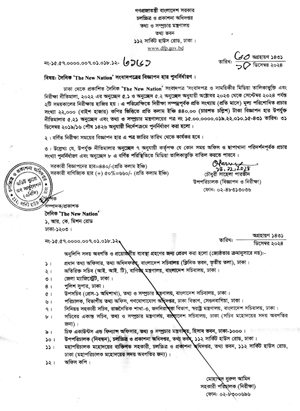Special Correspondent :
A shadow of danger hangs over Bangladesh as the ever-present threat of lightning strikes continues.
As the grip of climate change tightens, coupled with deforestation and an expanding digital landscape, the nation faces a growing crisis.
Data from the Department of Disaster Management (DDM) paints a chilling picture.
From 2015 to 2023, lightning claimed a staggering 1,958 lives. Men make up the majority of victims (1,620, followed by women (307, and children (31. The surge is attributed to a confluence of factors, including inadequate early warning systems and the dwindling green embrace that once offered natural protection.
The government has valiantly strived to counter this silent menace. Initiatives like installing lightning arrestors and strategically planting palm trees are underway. But the fight remains arduous.
A recent report by the Save the Society and Thunderstorm Awareness Forum (SSTAF) underscores the urgency, revealing 74 fatalities, including 35 farmers, from lightning strikes between April and May alone.
In a crucial step, the government declared lightning a disaster in 2016. Yet, the harsh reality persists, as DDM data shows an average of 242 lives lost per year. Experts warn that deforestation plays a sinister role.
Environmental activists champion the widespread planting of tall trees, especially in rural areas ravaged by deforestation. However, such efforts demand patience. Palm trees, chosen for their lightning-dissipating properties, take time to mature and reach their full protective potential.
Recognising the need for resilience, the government launched a multifaceted project in late 2023. This initiative focuses on installing lightning arresters and building shelters in exposed areas. By targeting vulnerable communities like farmers and fishermen, particularly during the volatile monsoon months of March to May, the project aims to mitigate the risks posed by lightning strikes.
SSTAF president Kabirul Bashar said that they identified various reasons behind the increase in lightning strikes: the increasing impact of global warming, deforestation, mobile towers, and cutting down trees in rural areas of Bangladesh.
“Climate change is also one of the major causes of lightning. Lighting has a close relationship with magnets, and they are used in electronic devices. Besides, taller trees have also been reduced in the country,” Kabirul Bashar, also a professor of the Zoology Department of Jahangirnagar University, told The New Nation.
He suggested planting ever-increasing trees across the country to control lighting.
“Normally, farmers are major victims of lighting as they work in open fields. It is needed to construct a multipurpose shelter centre with lighting arresters in open fields like haor and char areas. Besides, awareness is also to be created among the farmers,” he said in reply to a query.
The number of deaths caused by lightning strikes has been rising in recent years in Bangladesh, fuelled by climate change.
The country records an average of 300 deaths by lightning strikes every year, compared to fewer than 20 annually in the United States, which has almost double the population, says the UN.



